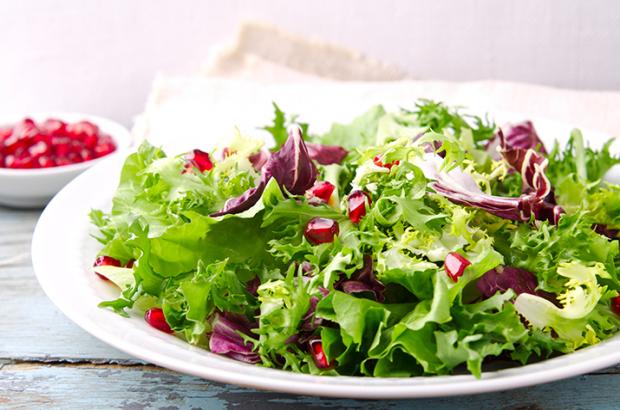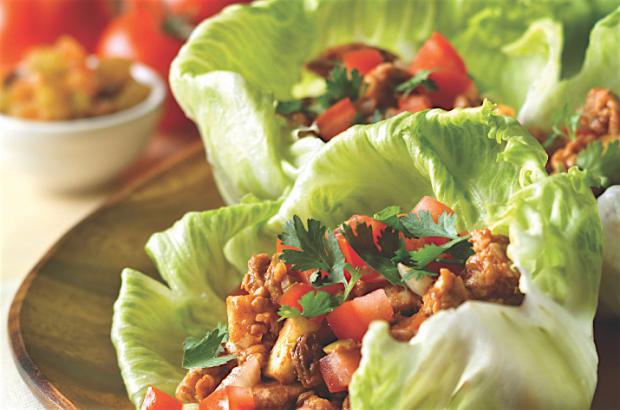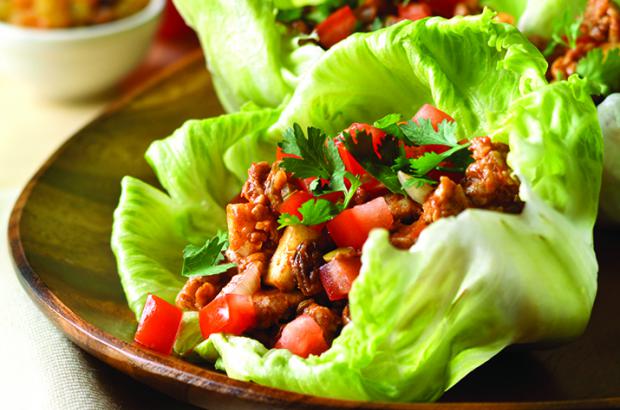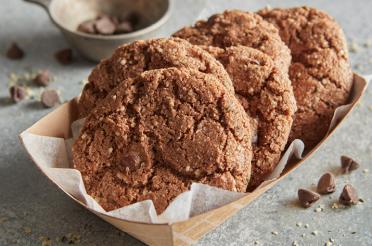Article
Lettuce

Is there a more ubiquitous vegetable than lettuce? Whether it's providing the basis of a green salad, a bed for a main dish, or a topping for a burger, lettuce is a staple in restaurants and kitchens everywhere.
A hardy, cool-weather vegetable, lettuce is a relative of the aster/sunflower family. The Egyptians—who bred edible leaves from weeds whose seeds they pressed for oil—were probably the first to cultivate lettuce, and the Greeks and Romans carried on the practice. In Latin, the green was called lactuca for "milk," because the plant exudes a white substance, latex, when cut. In fact, lettuce was a popular medicinal plant for centuries, thanks to the narcotic properties of lettuce latex. Doubtful? So was Beatrix Potter in The Tale of the Flopsy Bunnies: "It is said that the effect of eating too much lettuce is 'soporific.' I have never felt sleepy after eating lettuces; but then I am not a rabbit."
Besides being a source of dietary fiber, lettuce is a good source of vitamins A, C and K and folate.
There are thousands of varieties of lettuce. The main categories are leaf lettuce, iceberg, romaine and butterhead.
Leaf lettuce, or loose-leaf lettuce, has leaves branching from a single stalk. The leaves are often large and curly, soft and mild. Examples are green leaf lettuce, red leaf (or ruby) lettuce and oak leaf lettuce (a bit nuttier and spicier than green leaf).
Iceberg, or crisphead lettuce, is the classic sandwich and salad lettuce. It has a crunchy texture but little flavor. It grows in a round, compact head and is a good keeper, as far as lettuces go.
Romaine or cos lettuce is long and sturdy, with crispy leaves that are slightly bitter. The most flavorful leaves are the lighter, center ones, sometimes sold as romaine hearts.
Butterhead or butter crunch lettuce has a small, round, loosely formed head. The pale green/yellow green leaves are soft, tender and sweet. Boston or butter lettuce and bibb lettuce are both butterhead varieties.
Some varieties of lettuce—as well as overgrown or "bolted" lettuce—have a tendency towards bitterness.
There's a variety of lettuce that's cultivated for its stem. Known as celtuce, or stem lettuce, it's preferred in China, where vegetables are more often cooked or preserved than served raw.
Lettuce is an adaptable vegetable that invites creativity in the kitchen. Choose crisp, sturdy varieties of lettuce like romaine to stand up to assertive ingredients like those in a garlicky Caesar salad or a smoky BLT. Crispy, peppery arugula works perfectly with the soft, salty salmon in this Smoked Salmon and Arugula Salad, for example. Lime matches arugula's bite in Arugula with Tomatoes and Avocados in Lime Vinaigrette.
On the other hand, showcase tender, flavorful leaves of butter or bibb lettuce with simple vinaigrettes and light, creamy dressings featuring fresh herbs. In Waldorf Salad with Yogurt and Honey, concave sections of bibb or butter lettuce serve as cups for a delectable blend of apples, grapes, celery and walnuts in a tangy Greek yogurt dressing.
Lettuce makes a great wrap, too. In Lettuce Wraps with Watercress Aioli, a delectable blend of chicken, tomatoes and avocado, drizzled with a watercress aioli sauce is wrapped in lettuce leaves. Lettuce leaves serve as a wrap for a tasty seitan filling in Thai Lettuce Wraps with Seitan.
When shopping for lettuce, look for greens that are crisp and well-hydrated, not wilting or limp. They should be clean and free of rotting or browning leaves. Lettuce with “rusty” (oxidized) ends is past its prime. Look for a clean stem end that has been cut recently.
There are many suggested ways to store lettuce. One is to place it in a plastic bag with a paper towel inside to absorb any extra moisture. Another is to store the lettuce in vegetable storage bags made especially for the purpose. Lettuce should last about a week in the refrigerator, but the sooner you eat it the better.
Read more about lettuce and other greens.













